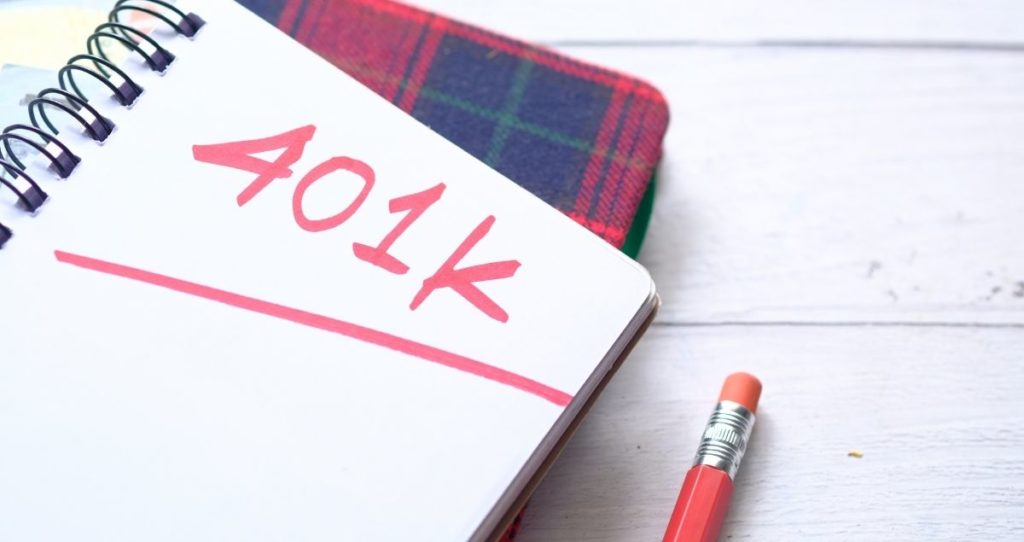While there are many ways to prepare and save for old age, contributing to your 401(k) plan and IRAs is the best way to save for retirement. If you are self-employed without access to 401(k) plans, there are retirement savings plans tailored to self-employed and small businesses that you can tap into. This article explains how I save for retirement and why I think this is the best way to save for retirement.
How do I save for retirement?
The formula I follow when saving for retirement is to contribute up to my employer’s match and then max out my IRA. When I have extra cash to save for retirement, I return to my 401(k) plan and max it out. I use any remaining money to buy long-term investments such as low-cost mutual funds, ETFs, and Index funds.
If you stick around a little longer, I will show you why this saving strategy is the best way to save for retirement.
How to save for retirement?
The retirement saving plan you choose will depend on many factors. For example, if employed with a 401(k) plan, you can contribute to your 401(k) and open an IRA. However, the 401(k) option won’t be available if you are self-employed. If you fall into this category, you can use retirement accounts designated for self-employed individuals and small businesses, such as SOLO 401(k), SEP IRA, and SIMPLE IRA.
Let’s start with the best way to save for retirement if you have a 401(k) plan with your job. Since the 403(k) and 403(b) plans are similar, you can follow the same retirement saving plans if you have access to a 403(b) plan.
Step 1. Start with a 401(k) plan and save up to your employer’s match
If your job offers a 401(k) plan, you should contribute to this account first, as it provides maximum benefits. You must contribute up to your employer’s matching percentage to the plan. Then, make contributions to an IRA before adding more money to your 401(k) plan. This is because you also need to contribute to an IRA before you run out of money to save for retirement. IRAs have different benefits, and having a combination of a 401(k) and an IRA is the best way to save for retirement.
For example, if your income is $100,000 per year and your employer matches your contributions dollar for dollar up to 6%, you should contribute $6,000 to your 401(k). Your employer will also add $6,000 to the plan since you contributed up to the maximum match. If you have extra cash to contribute, save it in your IRA.
Here are the benefits of saving money in your 401(k) plan.
- The plan has the highest contribution limits: up to $23,000 or $30,500 if you are 50 or older in 2024.
- Most employers match your contributions by a small percentage, which is additional free money to the plan.
- Your contributions to the account give you direct tax benefits if you have a pre-tax 401(k) plan. The Roth 401(k) gives you tax benefits during retirement when you draw money from the account.
- You don’t pay tax on your earnings until you have retired because your account grows on a tax-deferred basis.
- Your account grows on autopilot as the money is invested automatically in investments available within the plan.
- Most plans come with low-risk investments such as low-cost mutual funds, ETFs, Index funds, and Target Date Funds.
Step 2. Open an IRA and contribute up to the maximum allowed for the year
You need to open and max out your IRA before maxing your 401(k) plan because IRAs come with unique benefits that 401(k) plans don’t have. IRAs have many investment options not available for 401(k) plans. For example, you can choose any investment, including stocks, bonds, and fixed-income assets.
It is recommended to start with a 401(k) plan because of free money from your employer match. You need that money as it is considered a 100% return on investment. As an investor, you can agree that no investment can guarantee a 100% return on investment.
For this step, you must contribute up to the maximum IRA contribution limits for the year. For 2024, you can contribute up to $7,000 or $8,000 if you are 50 or older. You can then invest this money into investments of your choice. For example, you can buy individual stocks, low-cost funds, and bonds or invest in money market accounts.
There are two types of IRAs: Roth IRAs and traditional IRAs. You can also have both if you choose to, but having one is enough.
- Roth IRA. When you open a Roth IRA, contributions to the account come from after-tax wages. This means you don’t get direct tax benefits but grow the account tax-free and draw money from the account tax-free during retirement. The account also allows you to pass your funds to descendants tax-free.
- Traditional IRA. With a traditional IRA, your contributions might be tax-deductible depending on your filing status, other benefits from your work, and your modified adjusted gross income(MAGI). With a traditional IRA, you grow the account on a tax-deferred basis and pay applicable tax during retirement.
Pros of having an IRA.
Having an IRA in the mix is one of the best ways to save for retirement, as IRAs offer unique tax benefits and flexibility on your account. Here are the pros of having an IRA.
- IRAs are easy to open from any bank, brokerage firm, or credit union
- You grow your account tax-deferred if you have a traditional IRA or tax-free growth with a Roth IRA.
- Qualified distributions from Roth IRA are tax-free.
- You can transfer the account to your descendants tax-free if you have a Roth IRA.
- Roth IRA does not have required minimum distributions(RMDs).
- The plan includes various investments, from equities to bonds and fixed-income assets.
- IRAs come with low account management fees compared to 401(k) plans
- You also have the option to automate your investments.
Downsides of an IRA.
While an IRA is an excellent retirement account, there are still some cons you need to be aware of.
- Lower contribution limits compared to 401(k) limits. IRA allows $7,000 or $8,000 if you are 50 or older in 2024, which is one-third of the limits on 401(k) plans, as the latter allows up to $23,000 or $30,500 in contribution limits if you are 50 or older.
- Early withdrawal penalty. Similarly to 401(k) plans, you might pay a penalty if you draw money from the account before turning 59½.
- The traditional IRA comes with RMDs, which must be taken as soon as you turn 73 as of 2024
- The lack of employer match. Since an individual opens an IRA and is not supported by an employer, you don’t get an employer match to the account.
- Too many rules. IRAs have many rules that don’t apply to 401(k) plans. For example, higher-income earners are not eligible to open a Roth IRA. At the same time, contributions to traditional IRAs are tax-deductible based on income, other benefits from your employer, and filing status.
Step 3. Return to your 401(k) plan and max it out
You might wonder why we juggled between IRAs and 401(k) plans. In the first step, we wanted to capture 100% of an employer match to the plan, so we started with 401(k) plans. We then moved to maxing out IRAs because IRAs come with extra benefits that 401(k) accounts don’t have. For example, you have unlimited investment options with an IRA, and the account is less strict than a 401(k).
If you still have extra cash to invest after contributing the maximum allowed to an IRA, return it to your 401(k) to max it out as well. You need to max your 401(k) plan before other investment options because of the tax benefits you get with a 401(k) plan.
With a 401(k) plan, you grow the account on a tax-deferred basis, which allows you to build wealth much faster than investing your money into a brokerage account. Tax-deferred means you delay paying taxes until you have retired.
So, contribute up to the maximum contribution limits to a 401(k) plan. For 2024, you can contribute up to $23,000 or $30,500 if you are 50 or older.
If you still have more money to invest after maximizing your 401(k) plan and IRA, invest in long-term investments, real estate, etc. Long-term investments allow you to pay capital gains tax, usually lower than 20%, instead of income tax, which can reach up to 37%.
Which IRA should you open to save for retirement?
Most people struggle to decide between a Roth IRA and a traditional IRA. While having a combination of IRA and 401(k) is the best way to save for retirement, the IRA you open makes all the difference.
So, which IRA should you open? The type of IRA you open depends on your 401(k) plan, current financial situation, and expected retirement income.
Open a Roth IRA if you have a pre-tax 401(k)
If you have a per-tax 401(k) plan from your job, you need to open a Roth IRA. This is because you draw money from a Roth IRA tax-free, which allows you to lower your tax liability during retirement. While you can still open a traditional IRA in conjunction with having a pre-tax 401(k) plan, your tax bill during retirement can be much higher than you want.
So, if you have a pre-tax 401(k) and anticipate a higher retirement income, opening a Roth IRA will help minimize your tax bills.
Open a traditional IRA if you have a Roth 401(k)
Some employers offer the option to choose between a Roth 401(k) plan and a pre-tax 401(k) plan. The only difference between these two plans is when tax benefits are realized. For the pre-tax 401(k) plan, you make contributions with before-tax wages through payroll deductions, grow the account on a tax-deferred basis, and pay income tax on your withdrawals during retirement.
On the other hand, the Roth 401(k) contributions come from your after-tax wages through payroll deduction; you grow the account on a tax-deferred basis and only pay applicable tax during retirement. For the Roth 401(k), you only pay tax on your employer match and earnings from it during retirement. Your contributions to the plan and earnings from them do not get taxed.
You should open a traditional IRA with a Roth 401(k) plan. Since contributions to a Roth 401(k) plan come from after-tax wages, you pay maximum tax for the year you made contributions. That is why opening a traditional IRA is the best way to save for retirement when you have a Roth 401(k) plan. That is, a traditional IRA helps you lower your current tax liability. You should also open a traditional IRA if your current income is higher and you expect a lower retirement income.
You might also like the best ways to save for retirement without a 401(k) plan.
Step 4. Contribute to an HSA and max it out
The best way to save for retirement is to take advantage of all tax benefits you qualify for. For this reason, opening an HSA would give you extra tax benefits while protecting you from expensive medical bills. To qualify for HSA, you must be enrolled in a high-deductible health plan(HDHP).
Since contributions to HSAs are tax-deductible, opening an HSA could be one of the best ways to save for retirement. The HSA requires you to use the money in the account for medical expenses to avoid a 20% penalty and tax.
If you did not know about it, HSAs can be used as a retirement savings account as long as you are not planning to withdraw money soon. After reaching a certain savings threshold, HSA allows you to invest a portion of your savings, similar to an IRA. After turning 65, you can withdraw your money for any expenses without paying that 20% penalty. If you use your HSA funds for non-medical-related costs, you will pay an income tax, but the penalty will no longer apply after turning 65. You can still use your HSA funds on qualified medical expenses without paying a penalty or tax.
Best way to save for retirement when self-employed/small business owner
So far, I have shown you the strategies to save for retirement when you are traditionally employed and have retirement benefits. However, if you are self-employed or a small business owner, you might need a different retirement saving strategy.
Being self-employed or a small business means you can’t access 401(k) plans. In this case, you can use other retirement savings plans tailored to small businesses and self-employed individuals. You can still open a IRA or a HSA account. However, you can use one of the following retirement savings accounts to offset the lack of a 401(k) plan.
- SIMPLE IRA. These are retirement savings accounts for small businesses with no more than 100 employees. With a SIMPLE IRA, contributions to employees’ accounts are deductible as business expenses. You must choose one of the two mandatory contribution options. (1) a nonelective contribution of 2% to every eligible employee or (2) a matching contribution of up to 3% of each employee’s compensation. For 2024, you can contribute up to $16,000 or $19,000 if you are 50 or older.
- SOLO 401(k) plan. A SOLO 401(k) plan is a retirement savings plan for self-employed individuals with no other employees except their spouses. Contributions limits and rules that apply to conventional 401(k) plans also apply to SOLO 401(k) plans.
- SEP IRA. The SEP-IRA stands for Simplified Employee Pension IRA. This plan is best suited for small business owners. With a SEP IRA, employers must contribute the same contributions to each eligible employee’s compensation. For example, if you contributed 10% to your SEP IRA account, you must also contribute the same percentage to each eligible employee’s compensation inside your organization.
I have created a complete guide to savings for retirement when self-employed or small business owners.
What is the best age to retire?
While you can work and save for retirement until you reach old age, at some point, you will stop working and start enjoying your savings. Traditionally, most people retire between 65 and 67, but you don’t have to wait that long. You can retire at any age if you have saved enough money to sustain you during retirement.
So, when is the best time to retire? Before you write a resignation letter and quit your job, go through this retirement checklist and ensure you are not leaving anything to chance. You don’t want to retire and find yourself 10 years later looking for jobs because you outlived your savings.
How do you know if you are ready to retire? Let’s rephrase the question and answer it below.
Can you live off passive income from your investments?
The best age to retire is when you have saved enough money to a point where no matter how long you live, you will never outlive your savings. How much money is that? Calculating this amount requires you to rely on your retirement lifestyle, current savings, and life expectancy. To simplify the equation, it makes sense to retire when you can comfortably live off passive income from your investments without touching the principal amount. Your passive income should cover all of your expenses during retirement. At this point, it is said that you have reached financial independence and can retire if you choose to do so.
Check out this guide that details how much you need to save for retirement and the best age to never run out of money.
Some people rely on their FIRE numbers to decide the age at which they can retire. FIRE stands for Financial Independence Retire Early. This movement involves extreme savings until one has enough money to retire. The amount needed per individual is the FIRE number, the least amount an individual needs to save before retiring.
To calculate your FIRE number, multiply your expected annual retirement expenses by 25. For example, if you plan to spend $50,000/year, your FIRE number will be $1,250,000($50,000×25). At this point, you can retire if you want. This amount is expected to last 30 years, assuming a 4% withdrawal.








